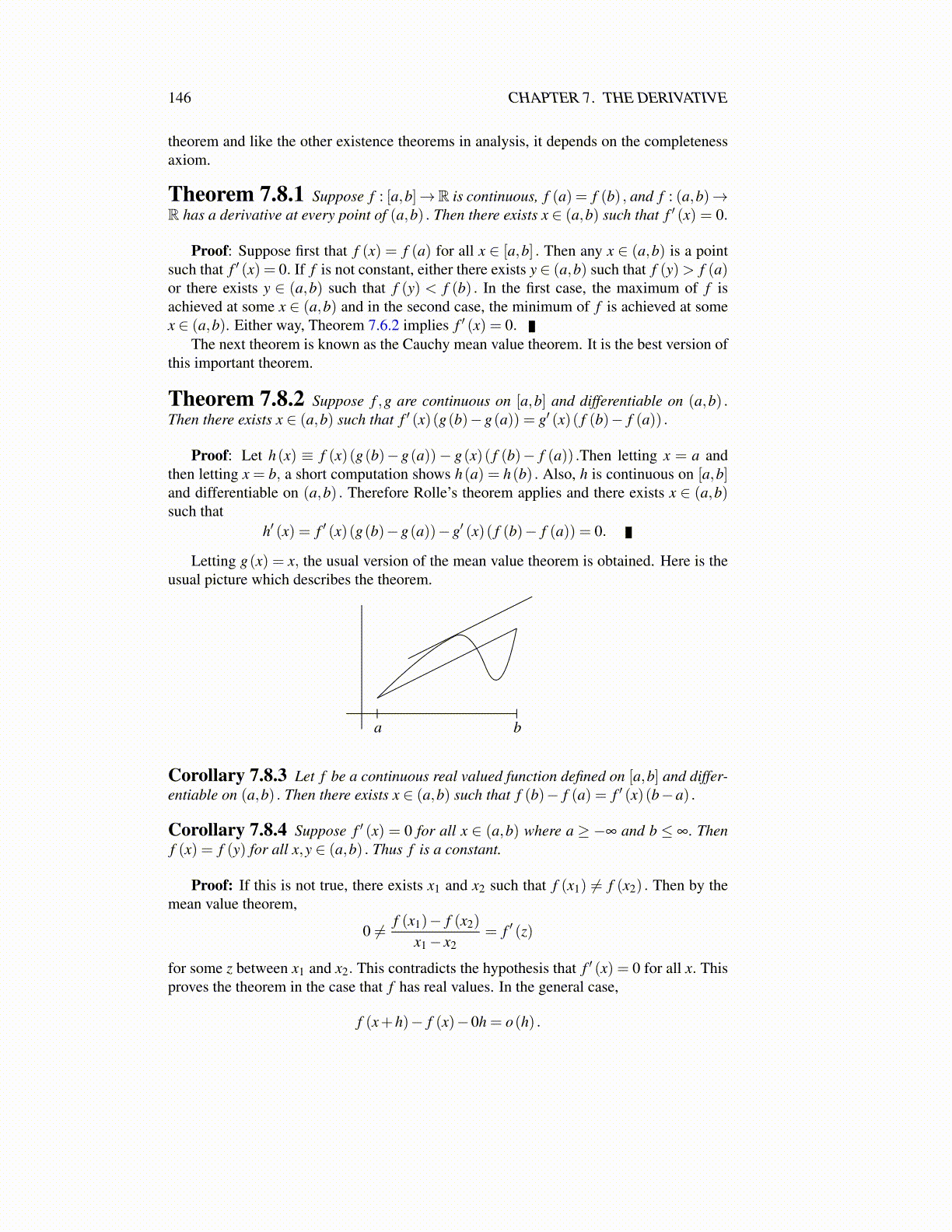
146 CHAPTER 7. THE DERIVATIVE
3. Show the cubic function f (x) = 5x3 +7x−18 has only one real zero.
4. Suppose f (x) = x7 + |x|+ x− 12. How many solutions are there to the equation,f (x) = 0?
5. Let f (x)= |x−7|+(x−7)2−2 on the interval [6,8] . Then f (6)= 0= f (8) . Does itfollow from Rolle’s theorem that there exists c ∈ (6,8) such that f ′ (c) = 0? Explainyour answer.
6. Suppose f and g are differentiable functions defined on R. Suppose also that it isknown that | f ′ (x)|> |g′ (x)| for all x and that | f ′ (t)|> 0 for all t. Show that wheneverx ̸= y, it follows | f (x)− f (y)| > |g(x)−g(y)| . Hint: Use the Cauchy mean valuetheorem, Theorem 7.8.2.
7. Show that, like continuous functions, functions which are derivatives have the in-termediate value property. This means that if f ′ (a) < 0 < f ′ (b) then there existsx ∈ (a,b) such that f ′ (x) = 0. Hint: Argue the minimum value of f occurs at aninterior point of [a,b] .
8. Find an example of a function which has a derivative at every point but such that thederivative is not everywhere continuous.
9. Consider the function
f (x)≡{
1 if x≥ 0−1 if x < 0 .
Is it possible that this function could be the derivative of some function? Why?
10. Suppose c ∈ I, an open interval and that a function f , defined on I has n+1 deriva-tives. Then for each m≤ n the following formula holds for x ∈ I.
f (x) =m
∑k=0
f (k) (c)(x− c)k
k!+ f (m+1) (y)
(x− c)m+1
(m+1)!(7.13)
where y is some point between x and c. Fix c,x in I. Let K be a number, dependingon c,x such that
f (x)−
(f (c)+
n
∑k=1
f (k) (c)k!
(x− c)k +K (x− c)n+1
)= 0
Now the idea is to find K. To do this, let
F (t) = f (x)−
(f (t)+
n
∑k=1
f (k) (t)k!
(x− t)k +K (x− t)n+1
)
Then F (x) = F (c) = 0. Therefore, by Rolle’s theorem there exists y between c andx such that F ′ (y) = 0. Do the differentiation and solve for K. This is the main result
on Taylor polynomials approximating a function f . The term f (m+1) (y) (x−c)m+1
(m+1)! iscalled the Lagrange form of the remainder.